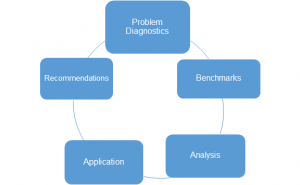Each day, we make decisions that have some degree of risk attached to them. Easier decisions require little thought or contemplation, and the risks are low.
However, decisions that have a greater impact, and may potentially have long-term effects, should be dealt with carefully and systematically because the risks are high.
The objective is not to retreat or become fearful about the risks in life where critical decisions have to be made.
With any risk-taking, there are bound to be some concerns.
Sicinski (n.d.) noted that “Risk-taking can expose you to potential loss, failure, embarrassment, rejection, criticism, and the possibility of getting hurt. All of these outcomes can seem rather painful and disheartening….” (para. 3).
Risk-taking is a part of life.
Grant (2019) suggested, “Everything we do has failure attached to it. All successful people have stories of massive failure attached to them. You are thinking that your risk is going to be pain-free and run as smooth as silk is insane. Expect some pain and failure. Actually, expect a lot of it. Expect the sleepless nights with crazy thoughts of insecurity that leave you trembling under the covers. It’s going to happen, no matter how positive you are about the risk you are about to take….” (para. 5).
All opportunities are not worth risking.
Reynolds (2019) posited, “Although you feel frustrated, resentful, or bored, you shouldn’t take a risk just because you don’t like what you have now. You need to be clear on what you want instead, so you know the risk will move you forward….” (para.5).
Although risk-taking carries a large degree of uncertainty, there are ways of mitigating the risk-taking process for optimal results.
Contrary to random risk-taking, calculated risk-taking lends itself to greater caution.
The Merriam-Webster dictionary defines a Calculated Risk as “An undertaking or the actual or possible product of an undertaking whose chance of failure has been previously estimated.”
Although a calculated risk still has a degree of uncertainty, you can influence the chances for success with the right decision-making process.
Effective critical thinking helps risk-taking.
There is a myriad of critical thinking methods introverts can use to evaluate risk.
Brown (2016) developed the IBAR Critical Thinking Method (IBAR) as a simple, fast, and concise way to alleviate the fear of risk-taking using evidence-based decision-making.
IBAR is an acronym for Issue, Benchmarks, Analysis/Application, and Recommendations.

Issue (Problem Diagnostics)
The issue or opportunity begins the process. Even options that don’t present an immediate downside may have problems that need to be identified. The Issue segment of IBAR answers the opportunity’s What, When, Why, Where, and How.
By diagnosing the issue correctly, you begin asking the right questions for developing solutions that lead to effective decision-making.
You want to know the issue to isolate its impact on the perceived opportunity.
By understanding the core of the issue or opportunity, you can determine a timeline that allows you to ascertain what happened in that space of time that might have created the issue or opportunity.
Determining why an issue exists may require as many possibilities as there are solutions. Therefore, including what can be drawn from facts and what assumptions might need to be made.
Finally, how the issue occurred may or may not be immediately known. But, by combining all the possible angles to an issue (What, When, Why, Where, and How), you have done a thorough diagnostic of the issue’s totality, giving you direction and insight into what is to be considered.
It’s acceptable to have repetition in diagnosing a problem to ensure all the possibilities have been exhausted. Otherwise, you will miss something in your diagnosis that can impact your benchmarking and analysis.
Benchmarks
Benchmarking is a method of comparing your business, ideas, and models against industry standards, leaders, or best practices. When an issue arises, you can gauge the options available for resolution.

With the advent of the internet, benchmarking is easily accessible once you understand the primary research methodologies for generating best practices.
Available data on search engines allow you to vet what has been done in previous, similar situations.
Once you have isolated possible solutions to your problem, you can begin analyzing and developing applications.
Dr. William Duggan, in his book, “The Art of What Works…,” suggested that by reviewing what has worked successfully in the past, with some modification, it will work again. Good examples are remakes of successful songs, movies, and fashion.
If they were hits in the past, they likely would be hits again. By developing case studies of best practices, precedents, and standards that succeeded, you are as William Shakespeare attributed to his success: “Making new words out of old words.”
In this vein, risk-taking isn’t wishful thinking. Intuition comes from past experiences modified for current needs and usage.
Adopt an autodidactic mindset, and connecting seemingly disconnected ideas and concepts will become easier.
For example, if you determine that your issue is starting a new business, you would benchmark small businesses within your industry that are currently succeeding based on sales.

How would you choose your benchmarks?
You might put in the search engine “Most successful small companies in the current year.” When you do a Google search of this inquiry, an article titled “The 23 Most Profitable Businesses in 2020” emerges. This article summarizes the most successful small businesses based on profits.
If you measure success by other metrics, these considerations should be included in your search query.
By researching how these companies succeed, you can discover how to use these benchmarks to make your company successful.
The most crucial aspect of calculated risk-taking is the ability to use facts and information to evaluate the issue and understand an opportunity’s pros and cons.
Analysis/Application
The ability to decipher, filter, and connect disparate information comprehensively is essential for critical thinking and risk-taking. Any solution-based analysis has to be grounded in practical applications.
After you have determined the relevance of the best practices you have benchmarked, you have to ensure that the benchmarks fit within your operations.
The ability to compare, contrast, and weigh the benefits and liabilities is deliberated here to determine your recommendations.
Analyses ask two questions: How does a benchmark work? And why does it work?
In this analysis, you want to explore the benefits and liabilities of benchmark usage.
Knowing how a benchmark works helps you see a better way of addressing the issue.
It is a way of solving your problem and effectively using a proven formula for professional success.
In conjunction, knowing why it works helps illuminate its effect on your decisions. Many people look at an industry leader’s standing and attempt to duplicate it without analyzing how and why it works and whether it will work in your situation.
Do not rush to judgment without thoroughly vetting the benefits and liabilities. There is always a downside to every upside, so be vigilant in your analysis.
Economist Dr. Thomas Sowell suggests that there are no perfect solutions in life, merely trade-offs.
Are the best practices for food truck success aligned with your business plan if you are looking to invest in a food truck?
You can still use successful food truck benchmarks, but you may have to modify the results to fit your business model and offerings.
Recommendations
Unlike legal analysis, which calls for a conclusion, the IBAR critical thinking analysis calls for recommendations. Because of the mutability and flux of decision-making, recommendations allow for innovation and creativity based on the current landscape.
The overarching value of critical thinking is the flexibility and agility of trained minds in looking at issues and understanding the process of developing viable solutions based on practical research.
Providing recommendations allows you to change and modify your solutions as the situation requires. You may rank by priority.
You may also engage in small experiments that allow you to determine which solutions are most effective for turning around a problem or addressing an issue.
However, if you have a compelling solution that benefits outweigh liabilities and fit within your operations, go with that.
The keys to successful implementation are to remain open-minded, flexible, and objective.
Let facts and systems lead you to better decision-making and effective risk-taking.
In the end, taking calculated risks in life is better than never taking any risks at all.
— John T. Lipscomb
Related: Why INTJs Make Remarkable Entrepreneurs (And How You Can Too)

References
Brown, E. (2016). The IBAR way of critical thinking & thought leadership. Atlanta, GA: Core Edge Image & Charisma Institute, Inc.
Grant, D. (2019, Dec. 31). 6 ways to be a successful risk taker and take more chances. Lifehack. Retrieved from: https://bit.ly/3bGF2oP.
Reynolds, M. (2019, Jan. 6). How to determine if a risk is worth taking. Psychology Today. Retrieved from: https://bit.ly/3plsUwR.
Sicinski, A. (n.d.). How to take intelligent risks in the pursuit of your goals. IQ Matrix. Retrieved from: https://bit.ly/3vNB9Ff.


